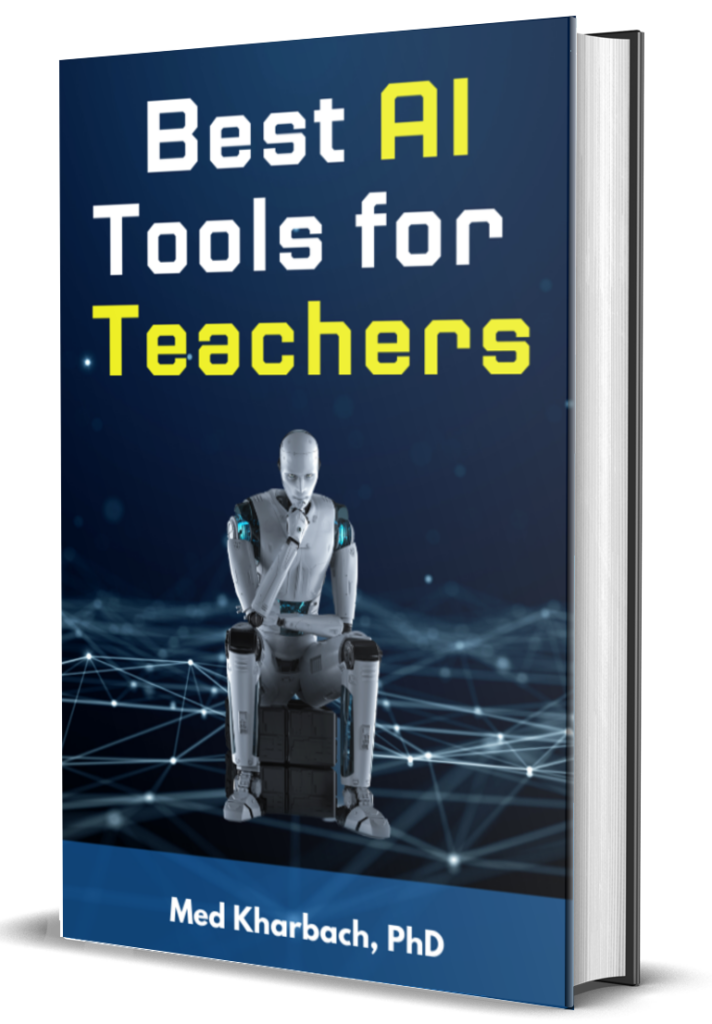Educators Technology
Innovative EdTech for teachers, educators, parents, and students
Home
Pedagogy
Educational AI
Edtech Tools
Edtech Apps
Teacher Resources
Special Education
Edtech for Kids
Buying Guides for Teachers
21st century education / Blooms Taxonomy Poster to Use in your Classroom
By Med Kharbach, PhD | Last Update: May 28, 2023
Bloom s Taxonomy is a hierarchical model representing different levels of learning objectives in the cognitive domain, from the simplest behavior (such as remembering facts) to the most complex (like synthesizing information to create new ideas). It was first presented in 1956 by educational psychologist Benjamin Bloom and his team of collaborators.
Knowledge: The basic level, which involves the recall of facts or information. This includes recognizing or remembering information.
Comprehension: This level involves understanding the meaning of the information, including interpreting facts, comparing, or explaining material.
Application: This involves using information in a new situation or context. This might include applying theories to practical situations or using information to solve problems.
Analysis: This level involves breaking down complex information into smaller parts for better understanding. This could include identifying motives or causes, making inferences, or finding evidence to support general statements.
Synthesis: This is about creating something new by integrating different pieces of information. This could include proposing alternative solutions, formulating a new scheme, or integrating learning from different areas into a plan for solving a problem.
Evaluation: The highest level involves making judgments or forming opinions about the information. This includes comparing and discriminating between ideas, assessing values of theories, making choices based on reasoned argument, or validating the worth of a solution.
In the 21st century, Bloom s Taxonomy was revised by one of his former students, Lorin Anderson, and his collaborators. The updated version changed the names of six categories into verb forms and slightly rearranged them:
These categories are meant to be cumulative, meaning that one should ideally not move to a higher level until mastery is achieved at the lower levels. Bloom s Taxonomy has been widely used in education to guide the development of curriculum, assessments, and learning activities. It helps teachers to ensure that all levels of thinking are exercised in learning experiences.
I prepared this handy visual to help make Bloom s Taxonomy more accessible and easier to understand for both teachers and students. This poster capturing Bloom s Taxonomy will be a valuable addition to your classroom. It can serve as a constant reminder of the different levels of learning objectives, encouraging students to aim higher in their cognitive thinking.
This Blooms Taxonomy Poster can also be incredibly useful during lesson planning, helping teachers ensure their lessons encompass a range of cognitive levels from remembering facts to creating new ideas. Teachers can glance at the poster while planning lessons or creating assessments to make sure they re challenging students at every level of the taxonomy.
Dr. Med Kharbach is an influential voice in the global educational technology landscape, with an extensive background in educational studies and a decade-long experience as a K-12 teacher. Holding a Ph.D. from Mount Saint Vincent University in Halifax, Canada, he brings a unique perspective to the educational world by integrating his profound academic knowledge with his hands-on teaching experience. Dr. Kharbach’s academic pursuits encompass curriculum studies, discourse analysis, language learning/teaching, language and identity, emerging literacies, educational technology, and research methodologies. His work has been presented at numerous national and international conferences and published in various esteemed academic journals.
Primary Sidebar Join our mailing list
Join our mailing list
Never miss an EdTech beat! Subscribe now for exclusive insights and resources.
Reade Favorites Best Voice Memo Apps for Teachers and Students
Footer



 Meet Med Kharbach, PhD
Meet Med Kharbach, PhD

